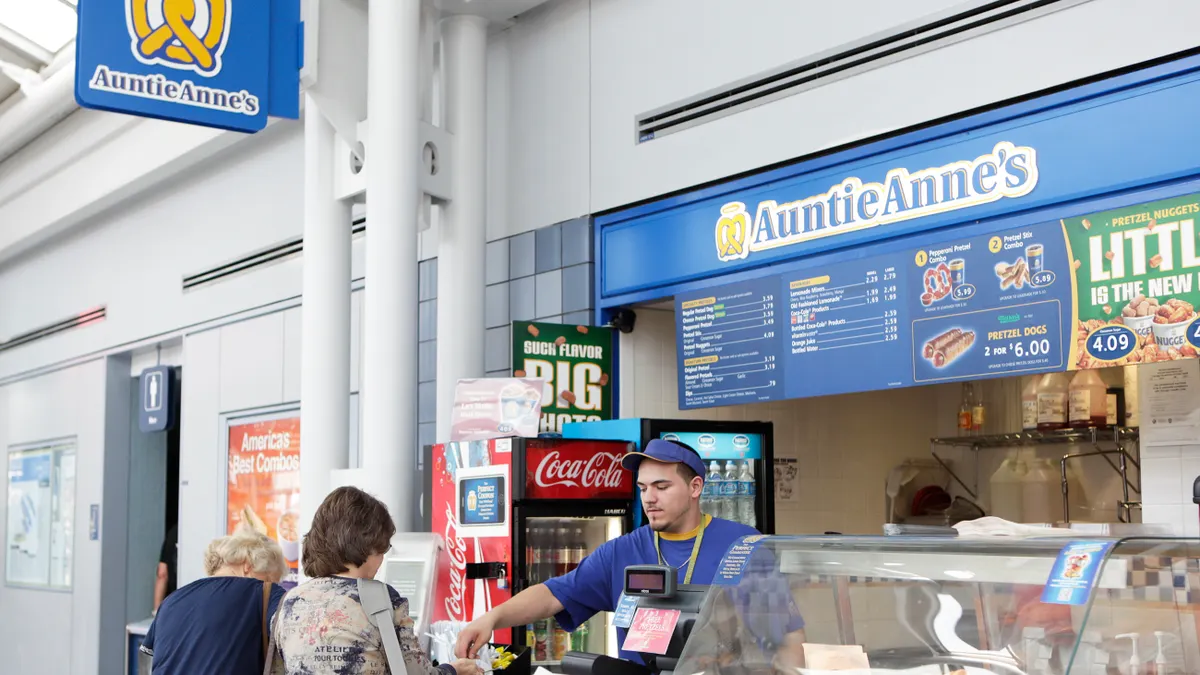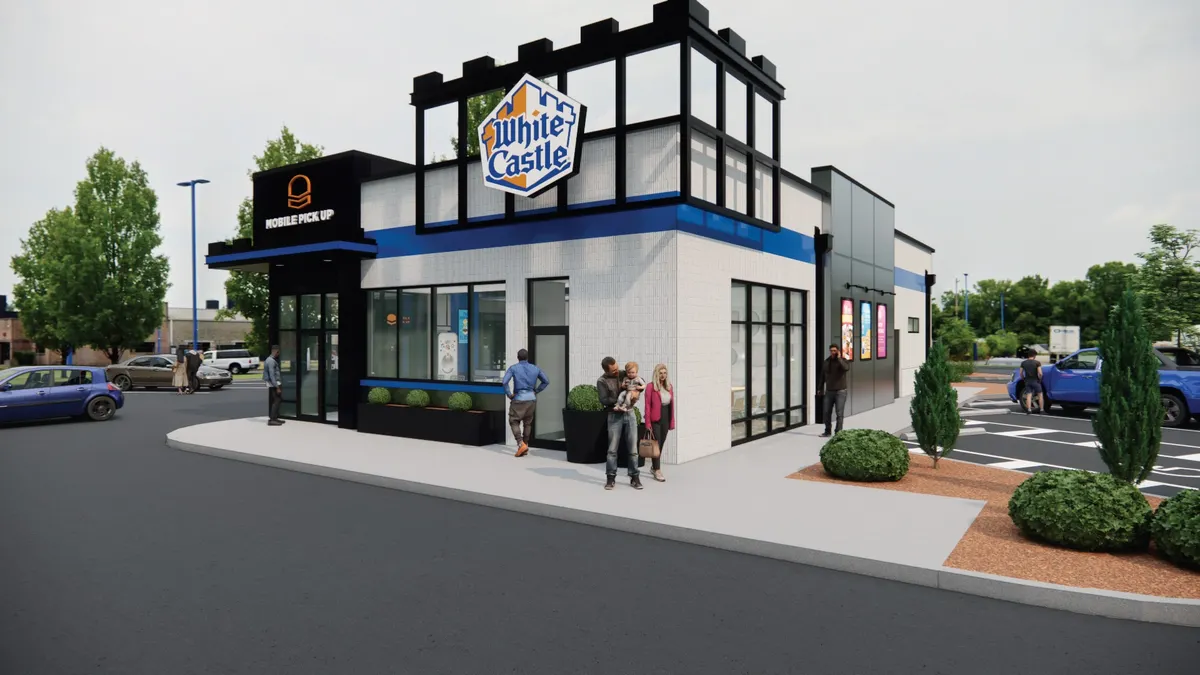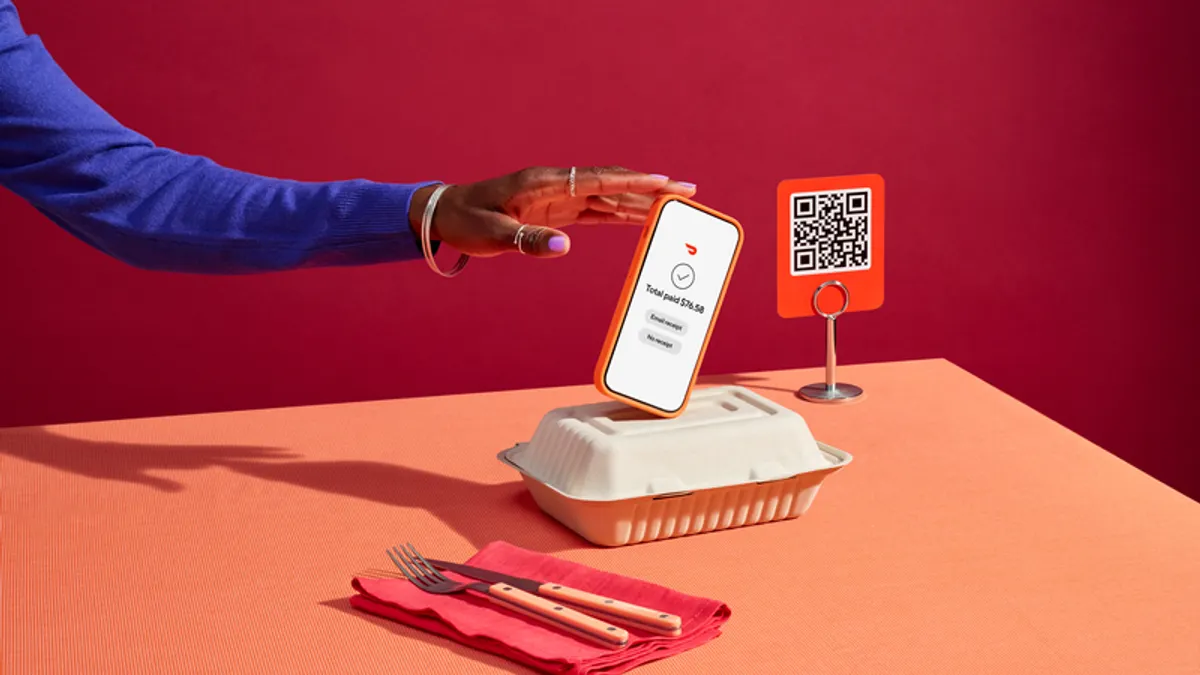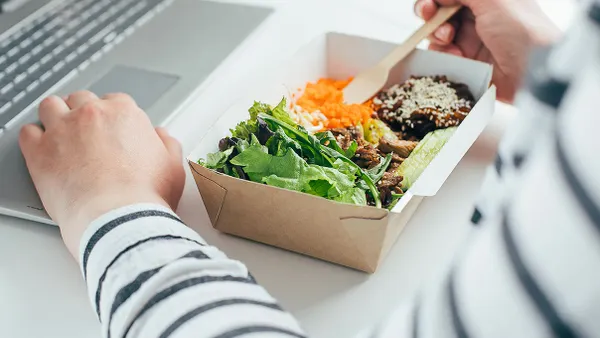The future of the restaurant industry was scattered across the NRA Show floor last week, with even more tech companies putting their products on display. Swipe, scan or tap, there was no shortage of gadgets that offered to leverage the latest technologies, from blockchain to artificial intelligence, to improve restaurant processes.
While there were dozens of platforms, Restaurant Dive demoed five that targeted key challenges in the industry, including the rise of foodborne illnesses, slow drive-thru times and labor shortages.
Bacteria and virus detector
The science behind PathSpot, a machine that detects foodborne illnesses on hands, sounds complicated. There are 3-D printers, visible light fluorescent spectroscopy, reflections of specific light wavelengths and, of course, in today's world of data, there are algorithms.
The idea itself, however, is a simple. But with E. coli outbreaks continuing to make headlines, it's important. Restaurant employees wash their hands and place it under the blue light emitted from PathSpot. Flip your hands over for a full screen, and in less than five seconds, the device will tell employees — and their managers — if they are clear of E-coli, salmonella, norovirus, hepatitis A or listeria. If not, employees have two minutes to suds up and try again.
In addition to keeping hands clean in real-time, PathSpot offers a data dashboard that helps restaurants identify recurring issues by showing when employees are failing scans and at what times of day, which locations are falling out of compliance and which managers are on duty. According to PathSpot, clients saw a 60% drop in contamination after one month.
The startup launched 18 months ago after CEO Christine Schindler sold her car for a 3-D printer. She told Restaurant Dive that she and co-founder Dutch Waanders, who both studied biomedical engineering, used that printer to tweak the style, size and type of device until they landed on the current scanner. And just six months ago, they began installing the tech in numerous restaurants across the country, including salad chain Chopt and Pizza My Heart in California.
The duo hopes that the technology will someday evolve to help detect other items beyond foodborne illnesses, including allergens like peanuts.
Drive-thru AI
"Ok, Sonic. What would you recommend to me today?"
This verbal prompt is all it takes for Sonic's new voice-assisted, artificial intelligence-powered digital menu to share local recommendations on its screen. If diners have allergies, they can tell the menu and it will automatically remove problematic food items from their available options. When customers place their order, the voice assistant will ask if they would like to customize any part of their meal, such as removing tomatoes from a cheeseburger. The menu will also advertise timely promotions — during Sonic's Happy Hour, it will ask users if they would like to add a half-price slush to their order, for example.
If a diner has registered for the Sonic app, the menu is able to offer even more advanced personalizations. When a driver with the app pulls up to the menu, its voice assistant will greet the customer by name, a behavior made possible by Sonic's geofencing, and record the customer's order. The next time that diner visits Sonic and opens the app, they will be greeted by the voice assistant, and can reply "I'll have my usual, please." The app will then pull up the customer's previous order and share any MasterCard promotions that are happening that day, such as a free chocolate milkshake for card holders. Customers don't need to go to a second window to pay, because payment is processed directly through the app.
Sonic will be the first restaurant to pilot this technology, made by Mastercard and kiosk vendor Zivelo, at select U.S. locations later this year. "When we bring this into the live environment one of the things we definitely want to look at is ... app downloads and if this will drive additional utility. It is a key metric for ourselves and for Sonic," Stephane Wyper, Mastercard's SVP, new commerce partnerships, told Restaurant Dive.
Facial recognition kiosks
It may feel futuristic, but step up to PopID's self-order kiosk to pay with your face. After a one-time sign up with email, credit card number and facial scanning, customers can walk into a participating restaurant and flash their mug to see offers, order and pay with a stored payment method. The company’s technology can reduce order times to mere seconds and can be particularly useful for repeat customers because it also stores a customer's order history. Currently, PopID's facial recognition kiosks are deployed at chains, including CaliBurger, Deli Time and several restaurants on college campuses.
Robot bussers and food runners
When Bear Robotics founder and CEO John Ha was working at Google, he quit his job to open a restaurant. While he thought it would be fun, his experience was completely different than he originally thought.
"It was really physically exhausting and affected me mentally, especially when I was serving," Ha told Restaurant Dive. "My legs were tired. I had to walk five to nine miles a day … Often I was so tired I didn't want to be nice to the customer."
This experience compelled him to make an autonomous robot — Penny as she is dubbed — that could help bus tables and deliver food. The server can then focus on customer service since they would have more energy throughout the day, he said.
The technology works similar to a self-driving vehicle where it goes on a set path. If a person crosses into Penny's path, it will stop and find another way around the obstruction. The robot isn't meant to replace waitstaff, only to enhance the service, which Ha saw at his own restaurant.
After deploying Penny at his restaurant, the tip rate went up and revenues increased 30%. Ha said he has deals in the works to bring the robot to big corporate franchises and hotel chains.
SevenRooms' Alexa voice command system
"Alexa, how are we doing tonight?"
"Alexa, who is at table seven?"
SevenRooms' newest product leverages Amazon's investment in the company with the addition of voice automation. Instead of tapping through a tablet to view reservations or sales numbers, staff can access SevenRooms' platform via Alexa on their smartphones.
The company also showcased smart glasses that have voice activation capabilities, allowing staff to roam around a restaurant floor freely. This capability could be a differentiator among other technology companies that offer similar restaurant management software, especially since the restaurant segment is still in the early days of experimenting with voice automation.




















